On a windswept site overlooking the lagoons that make up the Étang du Thau near Montpellier, Olivier and Clara Filippi have created a remarkable and experimental garden of Mediterranean native plants. When the pair set up their nursery Pépinière Filippi here in 1990, it was a brave undertaking considering their lack of formal horticultural training but Olivier suggests it was their lack of experience that gave them the confidence to believe “that everything was possible”.
Discover four drought tolerant planting combinations from Le Jardin Sec
As their nursery flourished, Olivier and Clara developed their experimental garden to test the thousands of wild plants they collected on their travels. Sandwiched between the Filippis’ home and the cliff’s edge, this 4,000 square metre garden may have a commanding view of the lagoon but it suffers exposure to the ravages of salt winds – not to mention the unbearable heat and drought of summer. The underlying soil is an alkaline clay that cracks in summer and is waterlogged during the frequent heavy rain events in late autumn and winter. Many would consider this an unlikely spot to create a garden but it is precisely these extreme conditions with which the Filippis wish to test their plants.
The garden is a rhythm of undulating mounds intermittently punctuated by columnar cypress
In order to adapt the site and provide necessary drainage they created mounded gravel beds and designed paths that doubled as rivulets to carry flood water away. For the past 30 years this pioneering pair have encouraged gardeners and designers to abandon wasteful irrigation, harmful pesticides and to “walk the desert” of ecologically sensitive, native planting. However, they insist they are not on an environmentalist mission but rather are just keen to share their knowledge and passion of Mediterranean flora. As climate change brings increasingly hotter and drier summers, so the Filippis’ lessons are more relevant to us all.
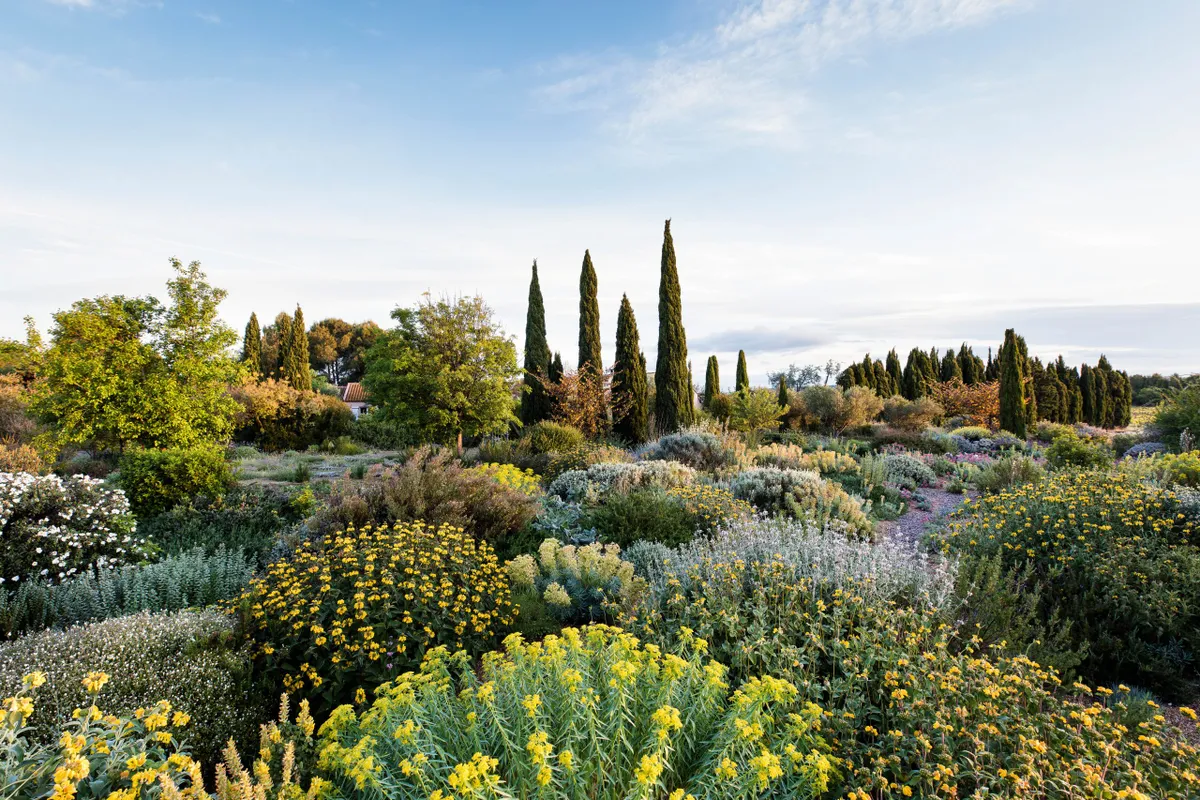
Nestled between the cliff and the Filippis’ home, this experimental gravel garden was developed to test the numerous Mediterranean plants the Filippis have collected on their travels. Early May provides one of the richest flowering moments at Le Jardin Sec but by high summer almost all the flowers will be gone leaving a subtle palette of silver, green and brown.
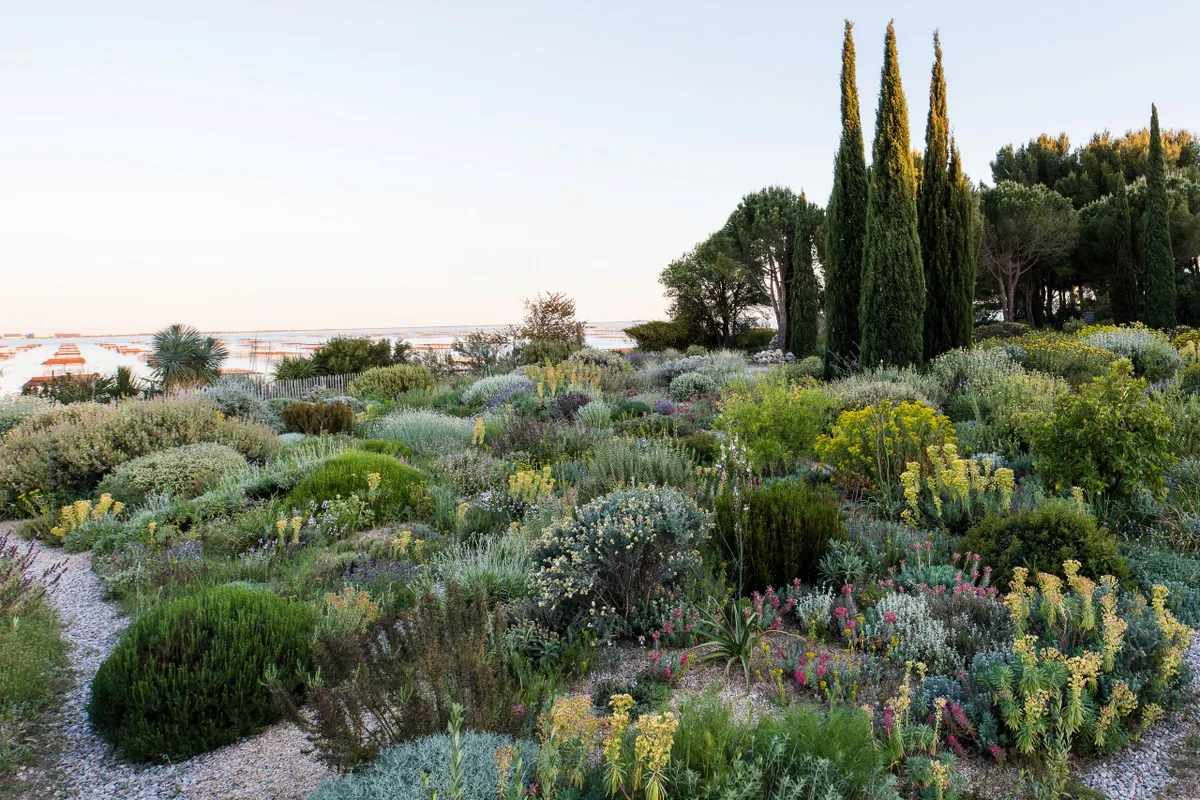
A complex tapestry of texture and form evokes the garrigue landscape as the eye travels out across the oyster farms that are a feature of the series of lagoons that make up the Étang du Thau. Tall, upright Italian cypresses, Cupressus sempervirens Stricta Group, provide a necessary vertical punctuation to the repetitive rhythm of the mound forms.
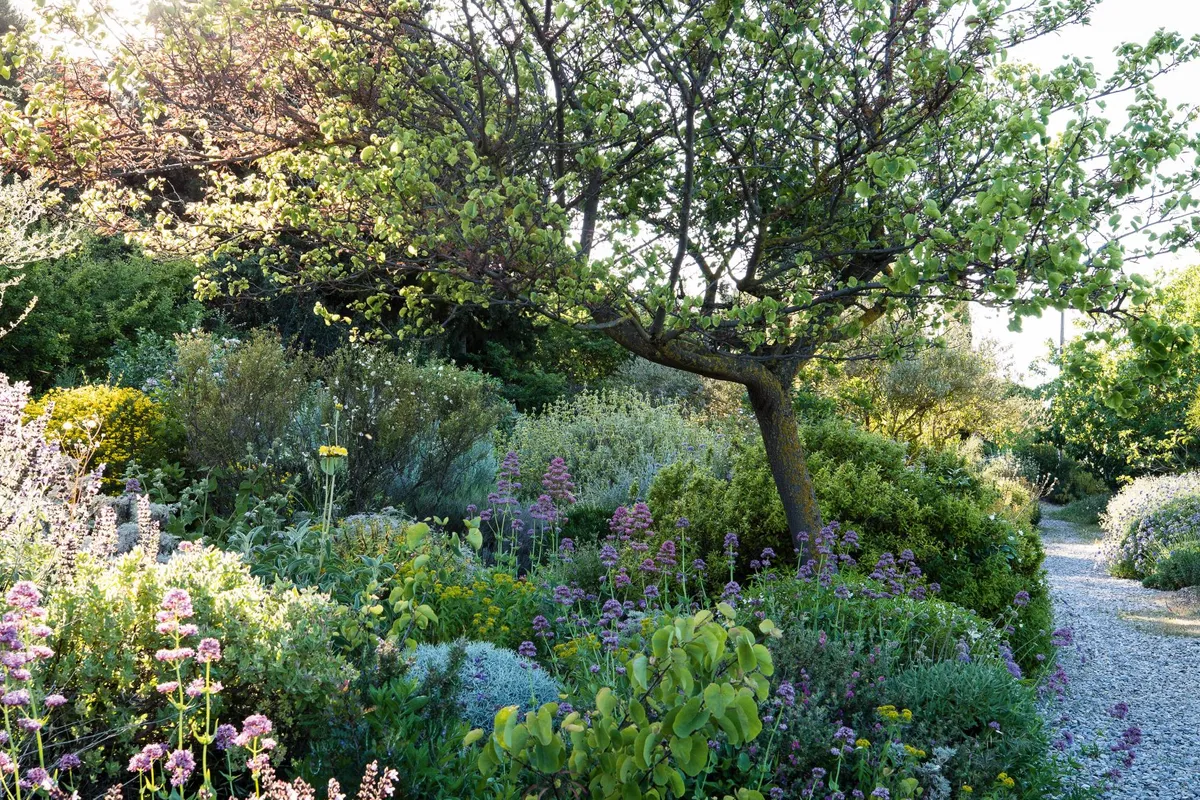
Plants are established on raised gravel beds 6-8cm deep, which provide perfect drainage while paths are maintained to provide channels for heavy rainfall. Now 30 years old, this garden sits comfortably with an expansive community of plants complemented by mature shrubs and trees.
Key drought tolerant plants from Le Jardin Sec
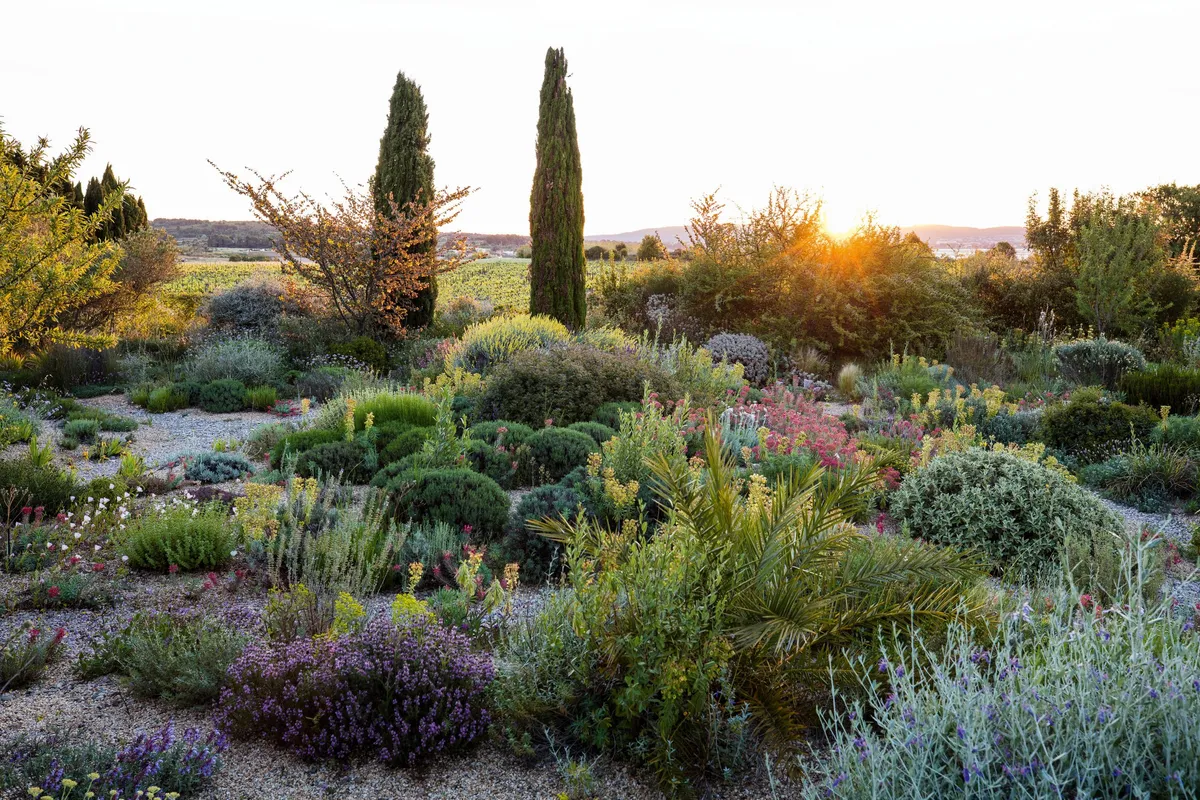
Being located so close to the sea front means the garden is buffeted by burning salt-laden winds that really test the resilience of many species but the reflective quality of the lagoon provides another dimension in the play of sunlight in the garden particularly as it casts across the water at sunset and sunrise.
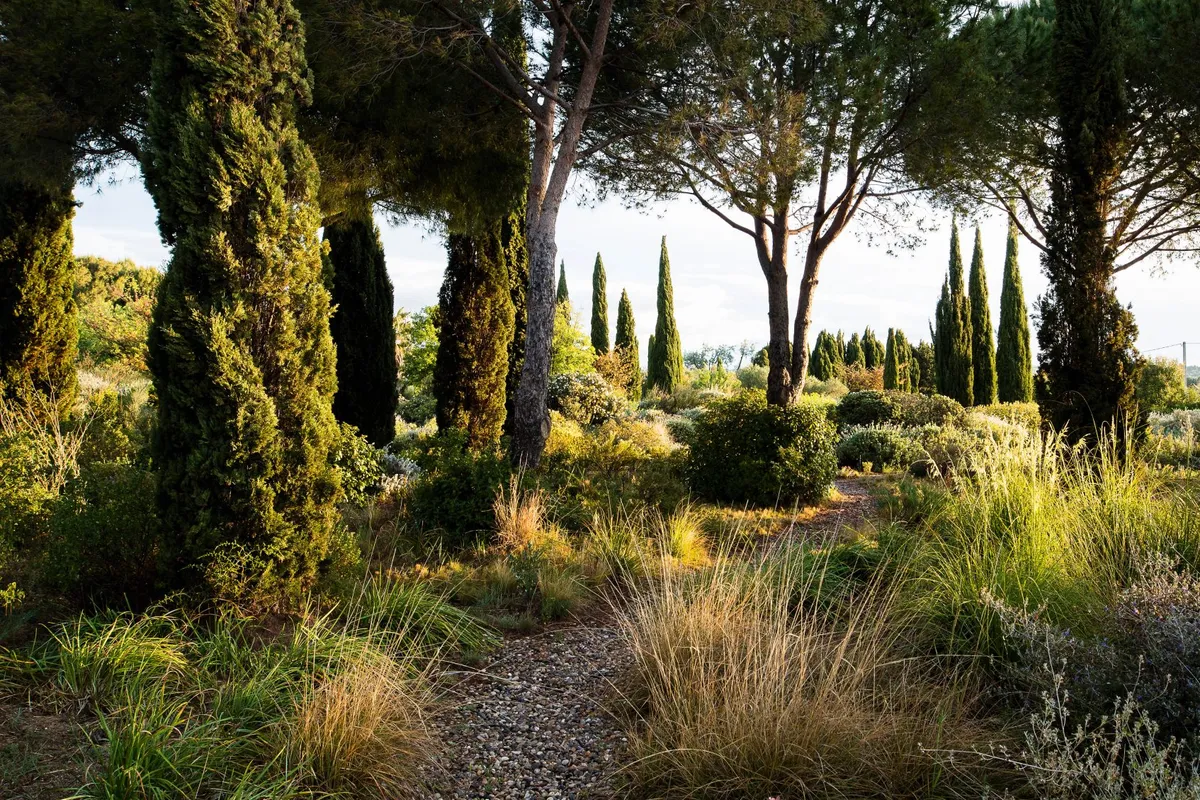
Winding paths lead away from the main garden through sparse groves of cypresses and the generous forms of stone pines. These trees provide some slight respite from the salt winds but they are also strongly evocative of the Mediterranean, which is captured in every fibre of this garden.
Pépinière Filippi, RD 613, 34140 Loupian, France. Tel +33 (0)4 67 43 88 69. Web jardin-sec.com